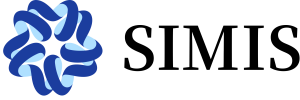Perverse schobers in representation theory
The goal of this course is to introduce the audience to the emerging field of perverse schobers in the language of Lurie's stable -categories and describe applications to the representation theory of dg-algebras.
In general, perverse schobers are a conjectural categorification of perverse sheaves, proposed by Kapranov-Schechtman.In the case of perverse schobers on surfaces with boundary, there has been much progress in developing a theory of perverse schobers, formulated in terms of constructible sheaves of enhanced triangulated categories on graphs. In the first four lectures,we will introduce this framework for the description of perverse schobers.We will see that perverse schobers offer the possibility of studying their categories of global sections via powerful local-to-global methods.
In the second part of the course,we will discuss examples of categories of global sections of perverse schober appearing in representation theory.These include the derived categories of gentle algebras and of (relative) Ginzburg algebras of surfaces. In particular,we will see how the perverse schober description leads to a description (of parts) of these derived categories in terms of curves in the surfaces, leading to the so called geometric models.
Plan:
Eight lectures, each 2x45 minutes.
•Lecture 1: Constructible sheaves, perverse sheaves and graphs in surfaces 2022-2-23
•Lecture 2: Reminder on stable∞-categories 2022-3-2
•Lecture 3: Spherical adjunctions, monadicity and examples 2022-3-9
•Lecture 4: Perverse schobers on surfaces via ribbon graphs 2022-3-16
•Lecture 5: topological Fukaya categories/gentle algebras via perverse schobers 2022-3-23
•Lectures 6-8: relative Ginzburg algebras of triangulated orn-angulated surfaces via per- verse schobers 2022-3-30&2022-4-6/13
In general, perverse schobers are a conjectural categorification of perverse sheaves, proposed by Kapranov-Schechtman.In the case of perverse schobers on surfaces with boundary, there has been much progress in developing a theory of perverse schobers, formulated in terms of constructible sheaves of enhanced triangulated categories on graphs. In the first four lectures,we will introduce this framework for the description of perverse schobers.We will see that perverse schobers offer the possibility of studying their categories of global sections via powerful local-to-global methods.
In the second part of the course,we will discuss examples of categories of global sections of perverse schober appearing in representation theory.These include the derived categories of gentle algebras and of (relative) Ginzburg algebras of surfaces. In particular,we will see how the perverse schober description leads to a description (of parts) of these derived categories in terms of curves in the surfaces, leading to the so called geometric models.
Plan:
Eight lectures, each 2x45 minutes.
•Lecture 1: Constructible sheaves, perverse sheaves and graphs in surfaces 2022-2-23
•Lecture 2: Reminder on stable∞-categories 2022-3-2
•Lecture 3: Spherical adjunctions, monadicity and examples 2022-3-9
•Lecture 4: Perverse schobers on surfaces via ribbon graphs 2022-3-16
•Lecture 5: topological Fukaya categories/gentle algebras via perverse schobers 2022-3-23
•Lectures 6-8: relative Ginzburg algebras of triangulated orn-angulated surfaces via per- verse schobers 2022-3-30&2022-4-6/13
Organizer
Previous Talks
Speaker:
Merlin Christ
Time: Wednesday, April 13, 2022 4:00 PM - 5:45 PM
Online: Zoom 361 038 6975 Password: BIMSA
Speaker:
Merlin Christ
Time: Wednesday, April 6, 2022 4:00 PM - 5:45 PM
Online: Zoom 361 038 6975 Password: BIMSA
Speaker:
Merlin Christ
Time: Wednesday, March 30, 2022 4:00 PM - 5:45 PM
Online: Zoom 361 038 6975 Password: BIMSA
Speaker:
Merlin Christ
Time: Wednesday, March 23, 2022 4:00 PM - 5:45 PM
Online: Zoom 361 038 6975 Password: BIMSA
Prerequisite
Helpful: Knowledge about dg-categories and their model structures.
Required:Familiaritywith the language of categories as in [1] and with the basicsof the theory of triangulated categories.
Helpful, but will also be recalled: Basic knowledge about the theory of stable -categories as in [2]
Required:Familiaritywith the language of categories as in [1] and with the basicsof the theory of triangulated categories.
Helpful, but will also be recalled: Basic knowledge about the theory of stable -categories as in [2]
Reference
[1]J. Lurie.HigherToposTheory. Annals of Mathematics Studies, vol. 170, Princeton Uni- versity Press, Princeton, NJ. MR 2522659, 2009.
[2]J. Lurie.Higher Algebra. preprint,availableon the author’swebsite, 2017.
[3]M. Kapranov and V.Schechtman.Perverse Schobers.arXiv:1411.2772, 2014.
[4]T. Dyckerhoff, M. Kapranov, V.Schechtman,and Y. Soibelman. Spherical adjunctions of stable∞-categories and the relative S-construction.arXiv:2106.02873, 2021.
[5]M. Christ. Spherical monadic adjunctions of stable infinity categories.arXiv:2010.05294, 2020.
[6]M. Kapranov andV.Schechtmann.Perverse sheaves and graphs on surfaces.arXiv:1601.01789, 2016.
[7]M.Christ. Ginzburg algebras of triangulated surfaces and perverseschobers.arXiv:2101.01939, 2021.
[8]S. Opper,P.Plamondon, and S. Schroll. A geometric model of the derived category of a gentle algebra.arXiv:1801:09659, 2018.
[9]Y. Qiu. Decorated marked surfaces (part B): topological realizations.Math. Z. 288,39–53., 2018.
[10]Y. Qiu and Y. Zhou. Decorated marked surfaces II: Intersection numbers and dimensions of Homs.Trans.Amer.Math.Soc.372, 635–660, 2019.
[11]M. Christ. Geometric models for Ginzburg algebras ofn-angulated surfaces via local-to- global principles.arXiv:2107.10091, 2021.
[2]J. Lurie.Higher Algebra. preprint,availableon the author’swebsite, 2017.
[3]M. Kapranov and V.Schechtman.Perverse Schobers.arXiv:1411.2772, 2014.
[4]T. Dyckerhoff, M. Kapranov, V.Schechtman,and Y. Soibelman. Spherical adjunctions of stable∞-categories and the relative S-construction.arXiv:2106.02873, 2021.
[5]M. Christ. Spherical monadic adjunctions of stable infinity categories.arXiv:2010.05294, 2020.
[6]M. Kapranov andV.Schechtmann.Perverse sheaves and graphs on surfaces.arXiv:1601.01789, 2016.
[7]M.Christ. Ginzburg algebras of triangulated surfaces and perverseschobers.arXiv:2101.01939, 2021.
[8]S. Opper,P.Plamondon, and S. Schroll. A geometric model of the derived category of a gentle algebra.arXiv:1801:09659, 2018.
[9]Y. Qiu. Decorated marked surfaces (part B): topological realizations.Math. Z. 288,39–53., 2018.
[10]Y. Qiu and Y. Zhou. Decorated marked surfaces II: Intersection numbers and dimensions of Homs.Trans.Amer.Math.Soc.372, 635–660, 2019.
[11]M. Christ. Geometric models for Ginzburg algebras ofn-angulated surfaces via local-to- global principles.arXiv:2107.10091, 2021.




